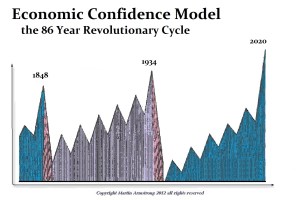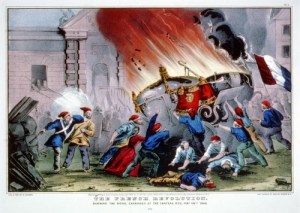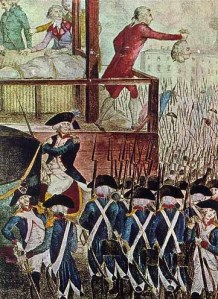Posted Jun 6, 2024 By Martin Armstrong
The defund the police movement was so effective that countless agencies are struggling to fill job vacancies. So we have politicians who demonized the police, philanthropists who funded mobs who chanted for their demise, and non-citizens running rampant, committing attacks on officers without consequence. The police are unable to implement law and order because divisive practices and an uptick in crime have become political tools.
ZipRecruiter conducted a new survey that found law enforcement training has become the hardest skill to find for employers with 13,179 vacancies. Some cities have resorted to completely shutting down their operations, such as the Pittsburgh police who have some precents completely vacant from 3 AM to 7 AM ET. “One hundred percent, this is about staffing,” said Robert Swartzwelder, president of Fraternal Order of Police Lodge No. 1. “You have a recruitment, retention and rhetoric problem.” The Pittsburgh police force has declined by around 40% in recent decades as more officers quit or seek retirement. We are seeing this happen across the United States.
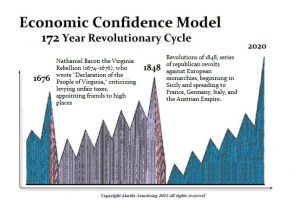
Governments fall when the police no longer offer them protection. This is one of the reasons why some cities are pushing to fill officer vacancies with migrants. All it takes it the police to side with the people over the government for everything to collapse.
![]()
This entire issue of rioting against the police is historically part of the Revolutionary Cycle that takes place in five stages:
Stage 1: Whistleblower Disagreements; Discontentment Grows
Stage 2: Initial Conflict Begins; Economy Begins to Decline
Stage 3: Civil Unrest Peaks
Stage 4: Revolution
Stage 5: Recovery

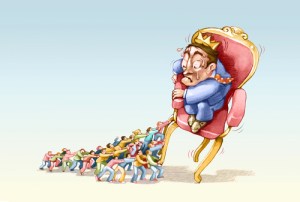
The FIRST STAGE in a revolution is always the rise of intellectual whistleblower disagreement, which the government simply ignores as a passing phase. This stage is the realization of corruption and injustice of governmental rule. Perhaps the symbolization of this was the revelation of Edward Snowden that the government was violating the constitution and abusing its power against the people, constructing a 100% surveillance state tapping into every phone call and email account of every citizen. Then there was the British whistleblower Katharine Gun, who they charged but could not put on trial without exposing themselves. They labeled both as traitors as if the government possessed inherent power of sovereignty and the people were the great unwashed economic slaves.
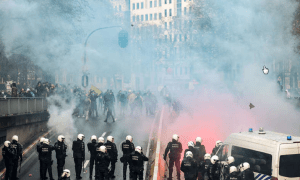
The SECOND STAGE is where the intellectual debates prove pointless, and the initial conflict begins. This corruption has run its course, and governments have transformed justice into their own self-interest. This stage is usually accelerated by governments raising taxes in the midst of an economic decline. The economic hardships may vary per individual, but as a whole, they will tend to focus upon the prosecutorial arm of government, which includes the police, who will far too often claim they are moral under the pretense of simply following orders.
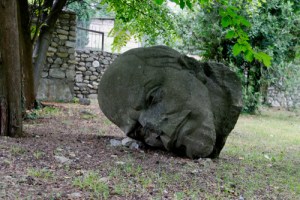
This is when history will typically produce some leader who can be a moderate who sees the problem and will often try to reason in order to reach a resolution that is ignored by the government. This further intensifies the feelings of injustice, especially in light of the economic decline. The leadership can also be seized by extremists who demand complete change, such as Lenin. This initial stage results in the first demands change with protests rising. The mobs rarely are able even to articulate the reform because they then make demands that they want certain actions that go far beyond what they actually need. This is where mobs will often turn to revenge rather than justice. Governments will typically refuse to reform and become often very defensive.
Therefore, the second stage is one of rising protests and discontent with initial confrontation against the government who relies upon the police state they have created. As long as the police continue to support the government against the people, this will inevitably lead to the next revolutionary stage.

![]()
The THIRD STAGE is where it often becomes an outright war in the streets as governments seek to retain power and refuse to see the error of their ways. In revolutions like the Nika Revolt of 532 AD, the police side with the people or stand back. In the case of the Ukrainian Revolution against Yanukovich, once the police saw that the people coming to the aid of the president were Russians, the police switched sides and supported the people. In the case of the Nika Revolt, the government called in the army, who then massacred the people and the police. In the case of the American Revolution, the central power was in England and not local. This allowed the local authorities to differentiate themselves from the British.
The FOURTH STAGE is retribution in a domestic revolution in direct confrontation with the government and head of state. In the case of the American Revolution, the head of state was not within reach. However, they confiscated property and hung those who supported the king. Of course, in the case of the Russian Revolution, they executed the entire Romanov family. This is the phase of evening the score for years of suppression and injustice.
The former head of state is often publicly killed, and typically all their ministers. This was the case not just during the Russian Revolution but the French Revolution with Louis XVI and his wife and the English Revolution, where they seized King Charles I and beheaded him in public as well. There have also been incidents of assassination even after a loss, as was the case with Abraham Lincoln in 1865.
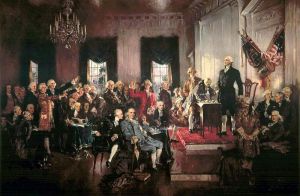
The FIFTH STAGE is typically the recovery stage, where a new form of government emerges from the ashes. The intelligent political moderates take power, as was the case in the United States, typically based on the ideas of some Utopian system. Once again, this differs insofar as the political power was in England rather than America, so there was not a wholesale murder campaign of all former ministers. In the case of the French Revolution, after the retribution stage, even the moderates were killed by the radicals led by Robespierre, who seized control. As the French Revolution fell into the hands of Robespierre (1758-1794), he began a Reign of Terror (September 5, 1793-July 27, 1794) that would come to an end with his own death. This was followed by more uprisings and eventually the French Constitution was drafted (August 22-September 23, 1795), and approved with the Directory taking power.
During this recovery stage, the radicals are usually overthrown, and sometimes, a new head of state emerges, such as Napoleon or Oliver Cromwell. In the case of the United States, where the former head of state was not local, the bureaucracy began, and we saw the rise of political parties. Divisions emerge once again between opposing political views. At this point, there is the restoration of a sense of nationalism, but the cycle of corruption slowly begins to take root.
We are currently in the second stage of the revolutionary cycle and rapidly heading toward stage three as discontent grows.

